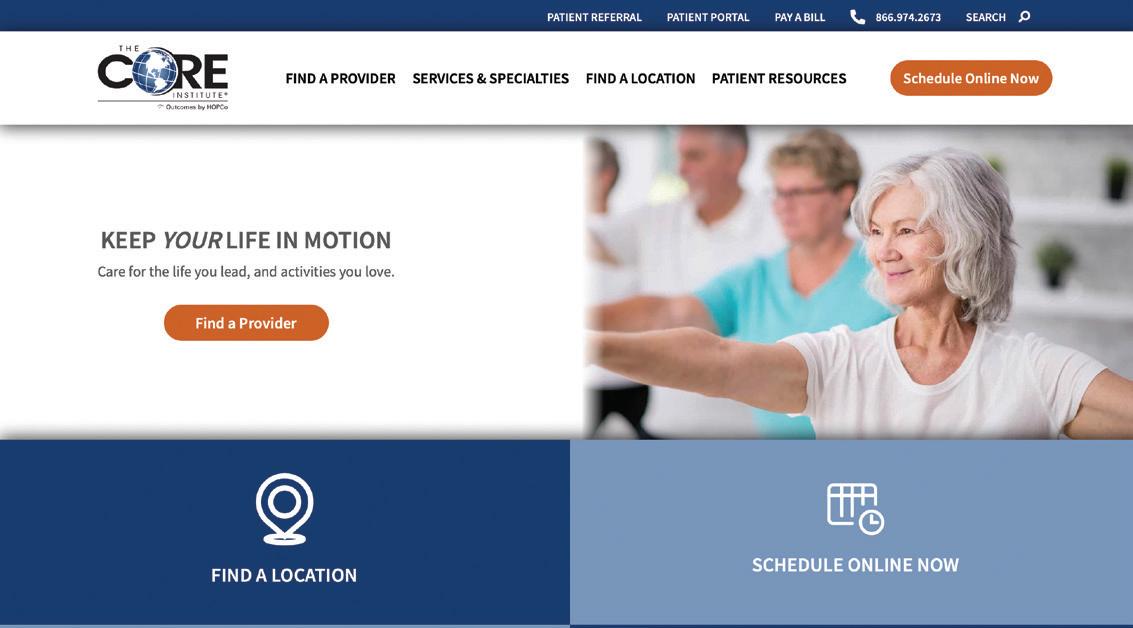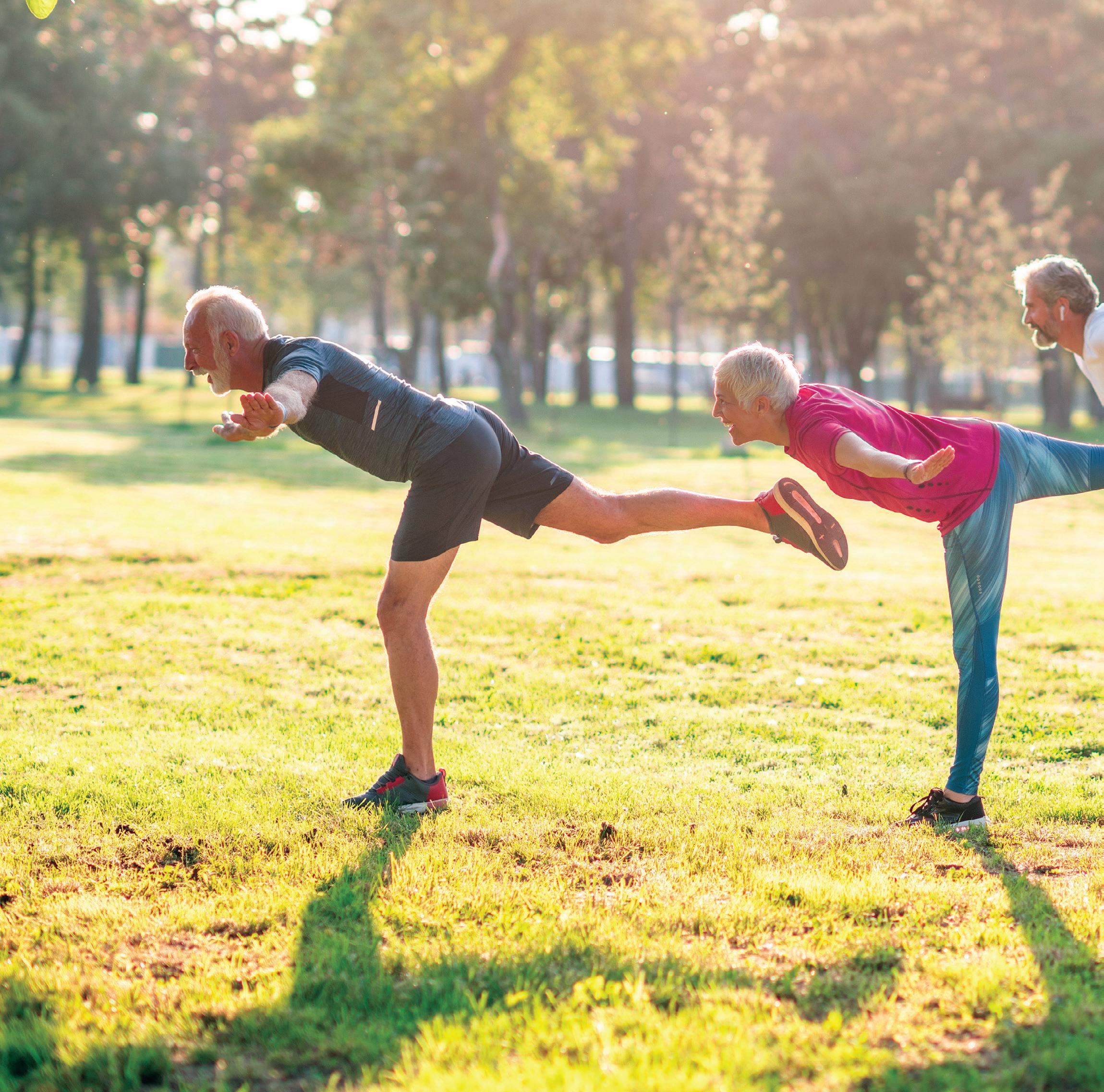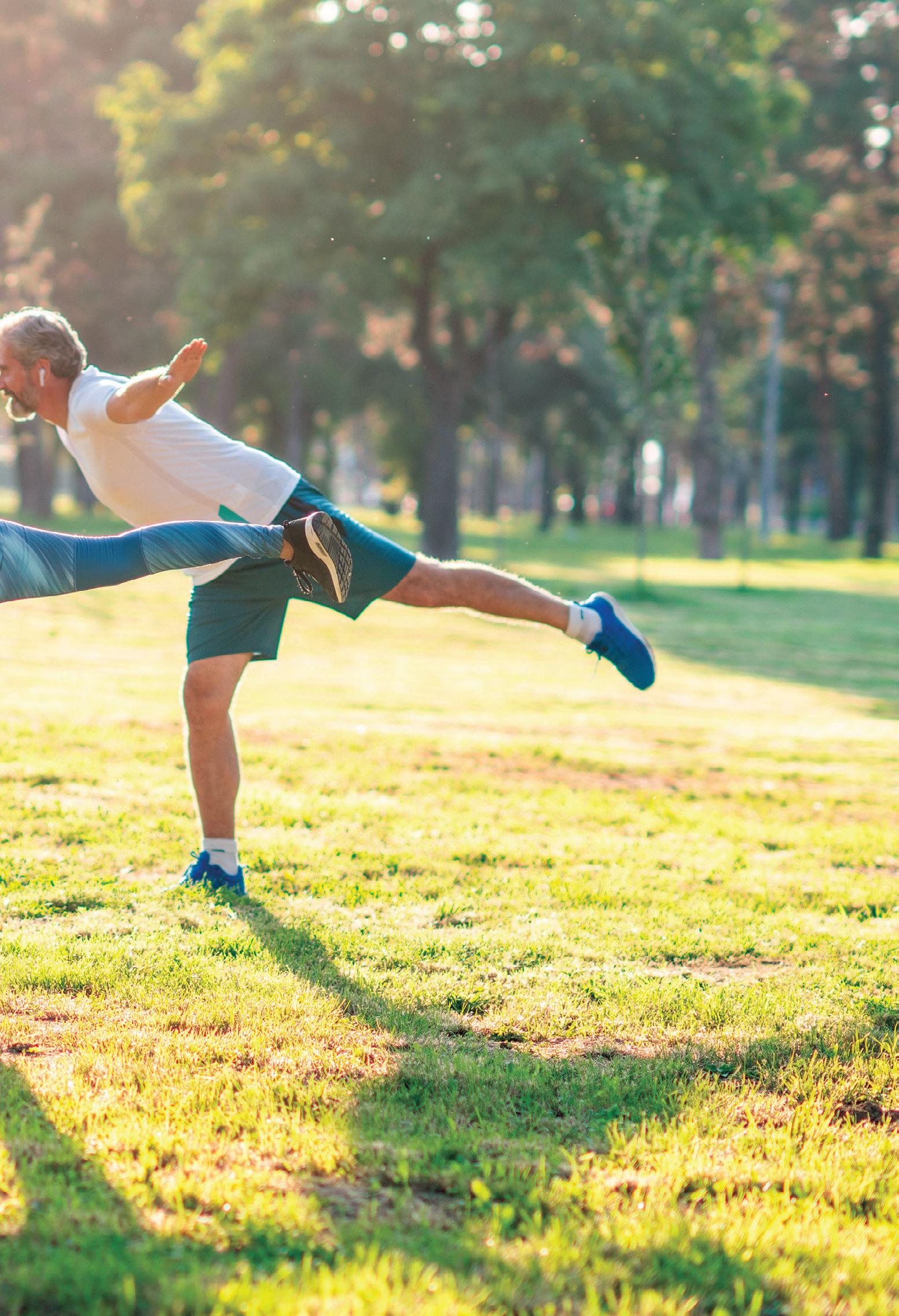
5 minute read
Sensors help to predict care needs after knee replacement
from CORE Ink - Fall 2020
by LOCALiQ
It’s a common trade-off for active adults as they age. The health benefits of being active still outweigh the wear and tear experienced in certain areas of the body; but knee joints, in particular, may eventually require medical intervention. Amalia de Comas, MD, an orthopedic joint replacement surgeon and musculoskeletal oncologist at The CORE Institute, discussed with Lopez his surgical options. Tired of pain being his new normal, Lopez scheduled his first knee replacement surgery, on his left knee, for April 2016. He would follow that up with For more information about knee replacement surgery on his right knee replacement surgery, knee in February 2017. visit TheCOREInstitute.com. For both surgeries, Dr. de Comas used computer navigation technology to precisely place the knee implants to optimize performance and rebuild Lopez’s arthritic knee. “The technology is very accurate. It allows us to plot points live on the knee and tells us if we’re within less than a millimeter of where we need to be,” Dr. de Comas explained.

ACTIVE RECOVERY Being active his entire life served Lopez well during the recovery period. After the first knee surgery, he was back in the gym “on light duty” within six weeks and at full speed after eight weeks. After his second surgery, he was back in the gym within eight weeks and at full speed by 10 weeks, he said.
While rehabilitating his knee, he took advantage of virtual visits with his physical therapists and stayed on top of his daily stretches and exercises. Patients are encouraged to get moving on the Amalia de Comas, MD day of surgery to promote recovery and performance, Dr. de Comas emphasized.
“You really want to get that motion right back in the knee. Once you know you can get going again, you need to be bending, straightening, you don’t want it to heal stiff or contracted,” she added.
NO PAIN, PLENTY TO GAIN Today, Lopez enjoys an active life again. The only restrictions he has are to avoid a lot of running and jumping, which could wear down the materials sooner than the roughly 15 to 20 years a new knee typically offers. But that doesn’t mean the active retiree doesn’t enjoy giving his new knees a good stress test from time to time. “I feel great and I have absolutely no pain. I take my classes at the gym; sometimes I’ll even do two classes back to back, and afterwards I still feel good. It’s a great feeling,” Lopez added.
You can now schedule appointments online, anytime 24/7 at TheCOREInstitute.com.
Look for the ‘Schedule Online Now’ button and follow the prompts to schedule today!

Schedule Online Now
Game Changing!

Sensors help to predict care needs after knee replacement
By Brian Sodoma K nowing how much or how little physical therapy and other care options a patient requires after knee replacement surgery is currently a guessing game based on averages and insurance allowances. However new research at The MORE Foundation pre-operative data on is using sensor 50 knee replacement technology, developed in patients at The CORE collaboration with ASU, Institute using the Lockhart could hold the key to very Monitor iPhone app. MORE accurate predictions for Foundation’s Human better, more efficient, Motion Lab research team post-operative care. will then analyze the data
In June of 2020, a state Marc Jacofsky, Ph.D to predict fall risk and grant was awarded to the assess post-operative care MORE Foundation, an Arizona nonprofit needs for the patients. dedicated to studying musculoskeletal “Fall risk is highly correlated with a and neurological conditions, to gather number of aspects of recovery and it’s
FOR MORE INFORMATION To learn more, visit www.more-foundation.org/research

important to quantify that,” said Marc Jacofsky, Ph.D, the MORE Foundation’s executive director and principle investigator for the study.
SENSING GAIT FROM YOUR PHONE Developed by ASU Biological and Health Systems Professor, Thurmon Lockhart, the phone app uses sensors to gather tremendous amounts of data about a person’s gait, pain tolerance, comorbidities and other musculoskeletal information within only a few minutes.
Under the study, that data, taken a couple weeks before surgery, is then leveraged by MORE Foundation’s research team to predict recovery care needs for each individual patient. Again, today’s post-operative care decisions rely almost entirely on outdated averages. In most cases, patients are prescribed a set number of physical therapy visits, perhaps six to 10, regardless of their condition and situation. Often, some require more, others less.
“The ultimate goal is to be able to predict, with a high level of certainty, if they’re going to walk well and have good balance after surgery,” Marc Jacofsky, Ph.D added, “and to make sure the supportive care around the surgery is best utilized.”
After surgery, additional sensors, applied above and below the knee, inform physicians of whether the patient is achieving milestones. Then care can be adjusted, if needed.
COMMERCIALIZATION, THE WEARABLE SENSOR MARKET The app has been available for download for more than a year, but it has predominantly been used by researchers in labs, not patient care.
“This study is a critical step in advancing the technology to make it available for both patients and doctors,” Marc Jacofsky, Ph.D noted. “We’re taking a complicated data set and making it easy for the medical professional to understand so they can make the best patient care decisions.”
The study is a joint partnership between the Partnership for Economic Innovation (PEI), ASU’s Fulton School of Engineering, The CORE Institute, and MORE Foundation. The technology comes out of the WearTech Applied Research Center, which was established in central Phoenix to develop and test wearable sensor technologies to monitor health and improve lives. Wearable sensors are a growth industry estimated to top $56.8 billion by 2025.
“We’re really excited about this project,” said Marc Jacofsky, Ph.D. “It helps cement our place in the community from a technology transfer perspective in terms of working with the University and moving ideas from the lab to the bedside.”





